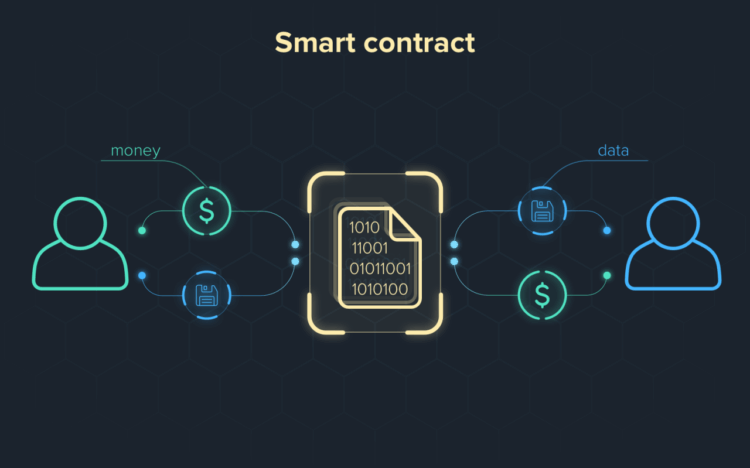The legal landscape is undergoing a profound, irreversible transformation, driven by the confluence of blockchain technology and Artificial Intelligence (AI). At the heart of this revolution are smart contracts, self-executing, self-enforcing agreements coded directly onto a decentralized ledger like a blockchain. While the initial concept of smart contracts—first proposed by cryptographer Nick Szabo in the mid-1990s—was purely technological, their modern application promises to fundamentally simplify, expedite, and secure a vast range of legal and business processes. This article delves into how smart contract tools and platforms are not just theoretical novelties but essential technologies reshaping the future of legal compliance, contract management, and decentralized governance, offering unprecedented opportunities for efficiency and risk mitigation.
The Core Concept: Decoding Smart Contracts
To appreciate the simplicity and power of these tools, one must first grasp the core mechanism. A smart contract is, essentially, an “if-this-then-that” statement written in code. It resides on a blockchain, giving it inherent qualities of immutability and transparency. When predetermined conditions are met, verified by the network, the code automatically executes the specified terms of the agreement, eliminating the need for a trusted intermediary, such as a lawyer, notary, or bank, for execution.
Key Characteristics of Smart Contracts
The transformative potential of smart contracts stems from their unique properties:
A. Autonomy: They operate without human intervention once deployed. This automation is the primary source of their efficiency. B. Trustlessness: Parties can transact without knowing or trusting each other, relying solely on the transparent and tamper-proof code. C. Immutability: Once the code is deployed to the blockchain, it cannot be altered. This ensures the integrity and finality of the agreement. D. Transparency: The existence and terms of the contract are visible to all participating parties on the public ledger, although the identities of the parties may remain pseudonymous. E. Security: The decentralized, cryptographic nature of the blockchain makes smart contracts highly resistant to hacking and fraud.
Distinguishing Smart Contracts from Smart Legal Contracts
It’s crucial to understand the subtle but significant difference between a smart contract and a smart legal contract.
- Smart Contract (Code Only): This is the pure, self-executing code. Its enforceability is based on the logic coded into the blockchain.
- Smart Legal Contract (Code + Law): This is an agreement that has all the elements of a legally enforceable contract in a specific jurisdiction (offer, acceptance, consideration, etc.) but has some or all of its terms automated by a smart contract. The code automates the action, while the underlying natural language document provides the legal grounding. This hybrid approach is what is truly revolutionizing the legal industry.
The Problem Smart Contract Tools Solve in the Legal Sector
The traditional legal industry, despite its necessity, is notorious for its slowness, cost, and complexity. Paper-based or even standard digital contracts require constant human intervention for drafting, negotiation, execution, verification, and enforcement. This process introduces friction, delays, and significant opportunities for human error and potential dispute.
Smart contract tools address these systemic inefficiencies head-on. They provide the interface and infrastructure that allow legal professionals and businesses to harness blockchain’s power without needing to become expert programmers. These platforms act as a bridge, transforming complex legal terms into executable, legally compliant code.
Areas of Legal Friction Eliminated by Automation
- Manual Verification: In traditional agreements, a third party often verifies that a condition has been met (e.g., a bank verifying a payment). Smart contract tools use oracles—secure, decentralized services—to feed real-world data directly to the contract, enabling automated verification.
- Settlement Delays: Payments or asset transfers often involve multi-day banking or legal clearance processes. With smart contracts, once conditions are met (e.g., product delivered, service completed), the transfer is instantaneous and atomic.
- Interpretation Disputes: Ambiguous language is the lifeblood of many legal disputes. Smart contract code, by its nature, demands explicit, unambiguous terms, significantly reducing the potential for later disagreement over meaning.

Essential Smart Contract Tools and Platforms
The market for legal technology (LegalTech) is rapidly expanding, with numerous platforms emerging to simplify the creation and management of smart legal contracts. These tools focus on making the technology accessible, compliant, and integrated with existing legal workflows.
1. AI-Powered Drafting and Review Tools
The integration of Large Language Models (LLMs) and specialized AI tools is perhaps the most significant recent development. These platforms use AI to analyze, draft, and audit the legal text that will underpin the smart contract code.
A. Automated Clause Generation: AI can ingest a natural language contract and automatically suggest the corresponding code structure for self-executing clauses. This dramatically cuts down on drafting time.
B. Compliance Validation: Advanced tools can scan both the legal text and the smart contract code against a vast database of global regulations (like GDPR or specific financial compliance laws) to flag potential non-compliance issues before deployment, acting as an essential risk-mitigation layer.
C. Risk Assessment: AI algorithms identify high-risk clauses or deviations from established legal “playbooks,” ensuring that standard, favorable terms are maintained during the negotiation process. Tools like Ironclad Jurist and Luminance are examples of this new wave of AI legal assistance.
2. Contract Lifecycle Management (CLM) Platforms
Modern CLM systems are moving beyond simple document storage to incorporate smart contract functionality, managing the entire lifecycle from inception to execution and renewal.
A. Template Libraries: They provide pre-vetted, legally-sound templates for common agreements (NDAs, supply chain agreements, real estate escrows) that have built-in smart contract capabilities.
B. Workflow Automation: These platforms manage the transition from natural language (human-readable) to code (machine-executable), ensuring a seamless and error-free translation process.
C. Integration with Oracles: Key platforms offer out-of-the-box integrations with decentralized oracle networks (e.g., Chainlink) to feed the contract necessary external data, such as market prices, successful shipping verification, or regulatory updates.
3. Decentralized Autonomous Organization (DAO) Frameworks
DAOs are an advanced application of smart contracts, representing an organizational structure governed by code rather than a traditional legal entity. Tools that simplify DAO creation are a critical subset of smart contract technology.
A. Legal Wrappers: Many jurisdictions (like Wyoming or the Marshall Islands) now offer specific legal frameworks for DAOs. Tools help structure the DAO under a legal entity (such as a DAO LLC or Non-Profit DAO) to grant limited liability and interact legally with the outside world.
B. Governance Modules: These tools provide pre-built, tested smart contracts for common DAO operations, including voting mechanisms, treasury management, and proposal submission, drastically simplifying decentralized governance.
C. Token Distribution Systems: They automate the initial distribution and ongoing management of governance tokens, which represent voting power within the DAO, ensuring compliance with securities laws where applicable.
The Legal and Compliance Edge: Mitigation of Risk
The self-executing nature of smart contracts does not eliminate the need for legal oversight; rather, it shifts the focus of legal work from post-execution litigation to pre-deployment drafting and auditing. Robust smart contract tools are built with compliance and legal risk mitigation as their central objective.
Smart Contract Audits and Security
A bug in smart contract code is not a simple typo; it’s an immutable, exploitable vulnerability. Tools and platforms must therefore prioritize security.
A. Automated Code Scanners: These tools automatically scan the deployed or pre-deployment code for known vulnerabilities, such as reentrancy attacks, integer overflows, or improper access controls.
B. Formal Verification Tools: For high-stakes contracts, formal verification tools mathematically prove that the code behaves exactly as intended under all possible conditions, offering the highest level of security assurance.
C. Version Control and Documentation: Legal-grade platforms enforce strict version control, ensuring that every iteration of the contract—both the natural language and the code—is meticulously documented and traceable.
Jurisdictional Enforceability and Dispute Resolution
The legal world is gradually catching up to the technology. Several jurisdictions now recognize the legal validity of smart contracts, provided they meet traditional contract criteria.
A. Jurisdiction-Specific Templates: Leading smart contract platforms now offer templates specifically designed to comply with the legal requirements of key jurisdictions, such as the Uniform Commercial Code (UCC) in the US or specific European regulations.
B. Built-in Arbitration Mechanisms: Tools can integrate Decentralized Justice Platforms (DJPs) like Kleros, where disputes that cannot be fully automated are resolved by a decentralized panel of jurors, and the outcome is then automatically executed by the smart contract.
C. ‘Emergency’ Override Mechanisms: While immutability is a feature, in complex legal scenarios, the ability to halt or correct an erroneous contract is essential. Tools allow for the creation of multi-signature (multi-sig) wallets or governance vetoes that can, under strict, pre-defined legal circumstances, pause or upgrade a contract. This preserves the spirit of immutability while providing a legally responsible “break-glass” option.
Future Outlook: The Legal Practice of Tomorrow
The continued evolution of smart contract tools will usher in an era where most routine contractual agreements are fully automated. Legal professionals will move away from being process administrators to become high-value strategic architects who design the complex, compliant smart contracts of the future.
Impact on Legal Careers and Education
- New Specializations: We’ll see an increase in “Lawyer-Coders” or “Smart Contract Auditors”—legal professionals with a deep understanding of both contract law and programming logic (e.g., Solidity, Rust).
- Focus on Complex Structuring: Lawyers will concentrate on the highly bespoke, complex agreements and the necessary legal “wrappers” that connect the automated on-chain world with the regulatory off-chain world.
- Regulatory Adaptation: Jurisdictions worldwide will continue to adapt, creating clearer, more standardized legal pathways for smart contracts, which will further accelerate tool development and adoption.
The integration of smart contract tools is not merely an improvement but a paradigm shift for the legal industry. By leveraging AI for drafting, blockchain for execution, and specialized tools for compliance and security, the process of forming and enforcing agreements becomes faster, cheaper, and profoundly more reliable, ultimately simplifying the legal world for businesses and individuals alike.













